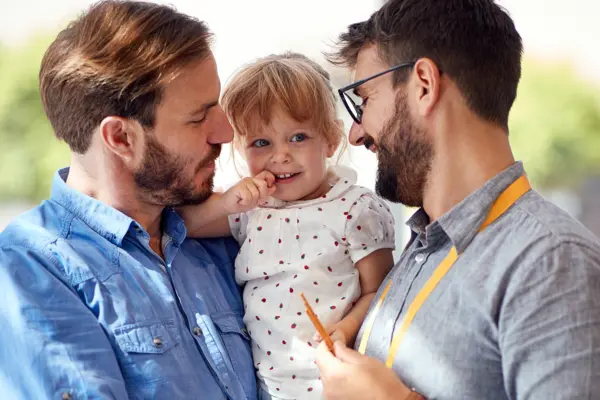What is the difference between fostering and adoption?
Date published
18 October 2023

There can often be some confusion around the difference between fostering and adoption, with one government research report finding that many people perceived fostering and adoption as ‘two sides of the same coin’*. Whilst both options aim to provide a stable and loving home for children and young people in need, they are distinct avenues that operate in different ways. One common misconception around fostering is that all placements of children or young people lead to adoption. Whilst this can happen, it is usually not the aim or a common outcome.
This week is National Adoption Week, so what better time to explore the key differences between fostering and adoption? Here are five main aspects that make them unique…
1. Legal status
Fostering involves providing a temporary or long-term home for children or young people who cannot live with their birth families due to various reasons, such as abuse, neglect, or parental health issues. Fostering arrangements are usually approved by local authorities, and the legal responsibility for the child remains with these authorities. Birth parents are encouraged to attend family time to maintain their relationships with their children, whilst assessments are carried out and/or courts reach their decisions.
Adoption, on the other hand, is a permanent legal process that transfers all parental rights and responsibilities from the child's birth parents to the adoptive parents. This change in legal status ensures that the child becomes a full member of the adoptive family.
2. Duration of care
Fostering is typically a temporary arrangement, although the duration of care can vary from days to years. This largely depends upon the type of placement. For example, emergency fostering doesn’t normally last longer than a couple of nights, whereas short-term fostering can be for up to a few months, and long-term fostering can last for years.
Adoption is a lifelong commitment. Once a child is legally adopted, they become a permanent part of the adoptive family.
3. Support and training
Foster carers receive ongoing training, support, and a fostering allowance. Here at Olive Branch Fostering for example, our foster carers receive regular training, a fostering allowance, and 24/7 access to our on-call social workers, 365 days a year.
Adoptive parents also receive training and support during the assessment process, but this is typically more focused on post-adoption issues and parenting skills. Adoptive parents are also usually financially responsible for their adopted child's upbringing.
Reflecting on all of these things, whilst both approval processes are very thorough, the adoption process is usually longer than the fostering approval process.
4. Demand
As of 31 March 2022, there were 43,905 fostering households in England.** In comparison, 2,950 children were adopted in that same year.*** Clearly, fostering has a much higher demand than adoption.
5. Ages
Foster care typically involves children of varying ages, up to age 18. From infants to teenagers, this may include children with specific needs or challenging behaviours. Fostering isn’t just limited to children either, as parent and child fostering involves providing support and a stable home to a vulnerable parent and child.
Adopted children often tend to be younger, although this can vary, with the average age being 3.5 years.**** Adoption agencies tend to allow prospective parents to specify the age range of the child they wish to adopt.
At Olive Branch, our Fostering Placements Officer works really closely with all foster carers to match each child or young person with the most suitable family. Considerations include the age of the child to make sure this fit with the preferences of the carer and complements the age range of any other members of the their family.
Can foster carers adopt?
Although fostering does not usually result in adoption, this can happen. One such example is Olive Branch foster carer Maxine, who started fostering a child four years ago and is now currently in the process of adopting them. Maxine and her family decided to start fostering because they love children and wanted to make a difference. Starting their fostering journey at the beginning of lockdown, their foster child became part of their family. After realising they would not be reunited with their birth parents, Maxine and her family applied to adopt their foster child, making them a permanent family member. Maxine would highly recommend fostering, saying it’s a lovely thing to do and can change lives.
Are you or is someone you know considering fostering? Our friendly team are on hand to answer any questions you may have, as well as support you in starting your fostering journey.
To make a start on your application, call us on 01706 558910 or contact us online and we’ll be in touch. There’s no obligation to go any further, and we’re happy to answer any questions you might have.
Read our previous blogs to discover our foster carer stories.
Fostering insights
18 October 2023